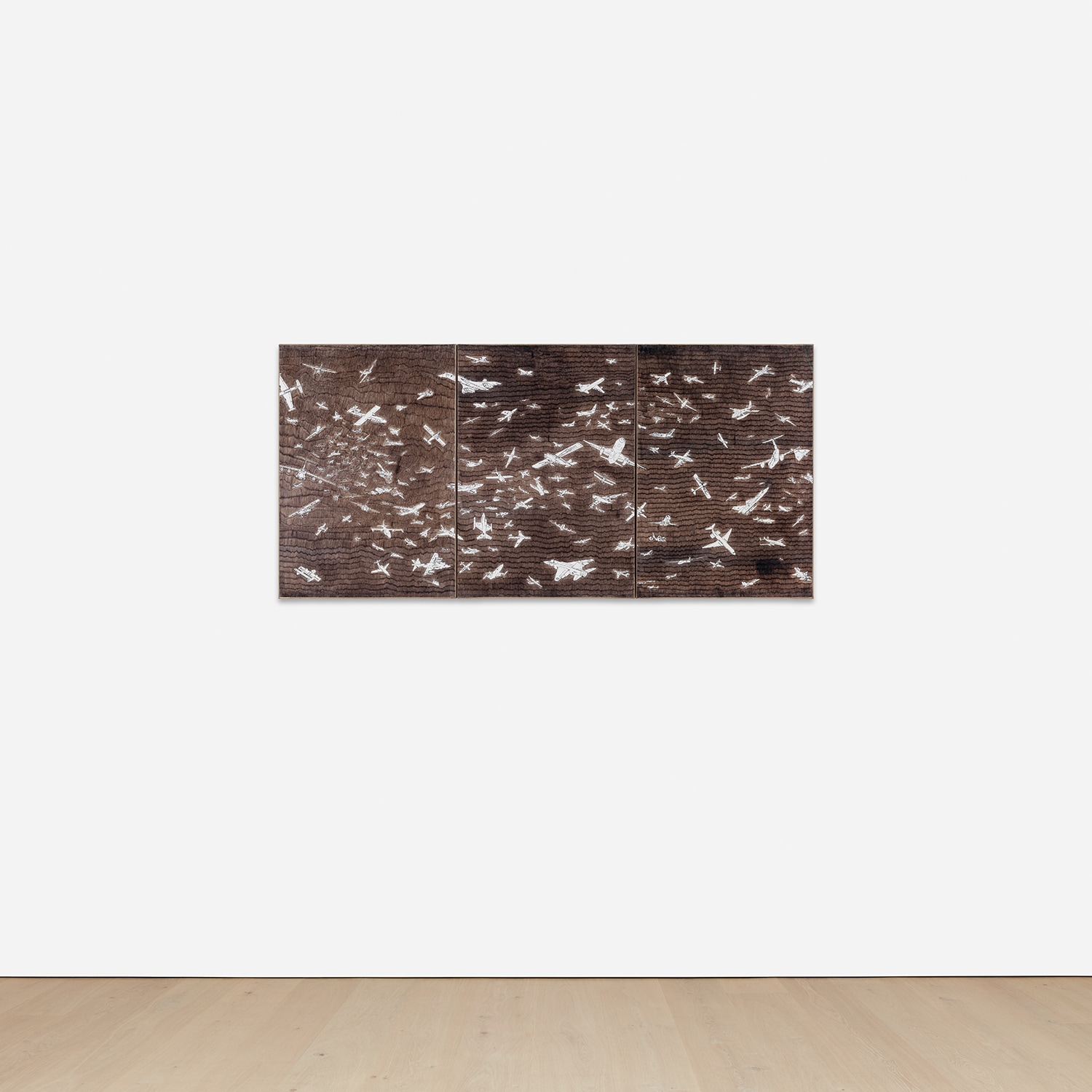



21Ο◆
Alighiero Boetti
Aerei
signed, inscribed and dated ‘alighiero e boetti Roma 1988’ on the reverse of the central canvas
ballpoint pen on paper laid on canvas, in 3 parts
each 64 x 44.5 cm (25 1/4 x 17 1/2 in.)
overall 64 x 133.5 cm (25 1/4 x 52 1/2 in.)
overall 64 x 133.5 cm (25 1/4 x 52 1/2 in.)
Executed in 1988, this work is registered in the Archivio Alighiero Boetti, Rome, under number 4923, and is accompanied by a certificate of authenticity.